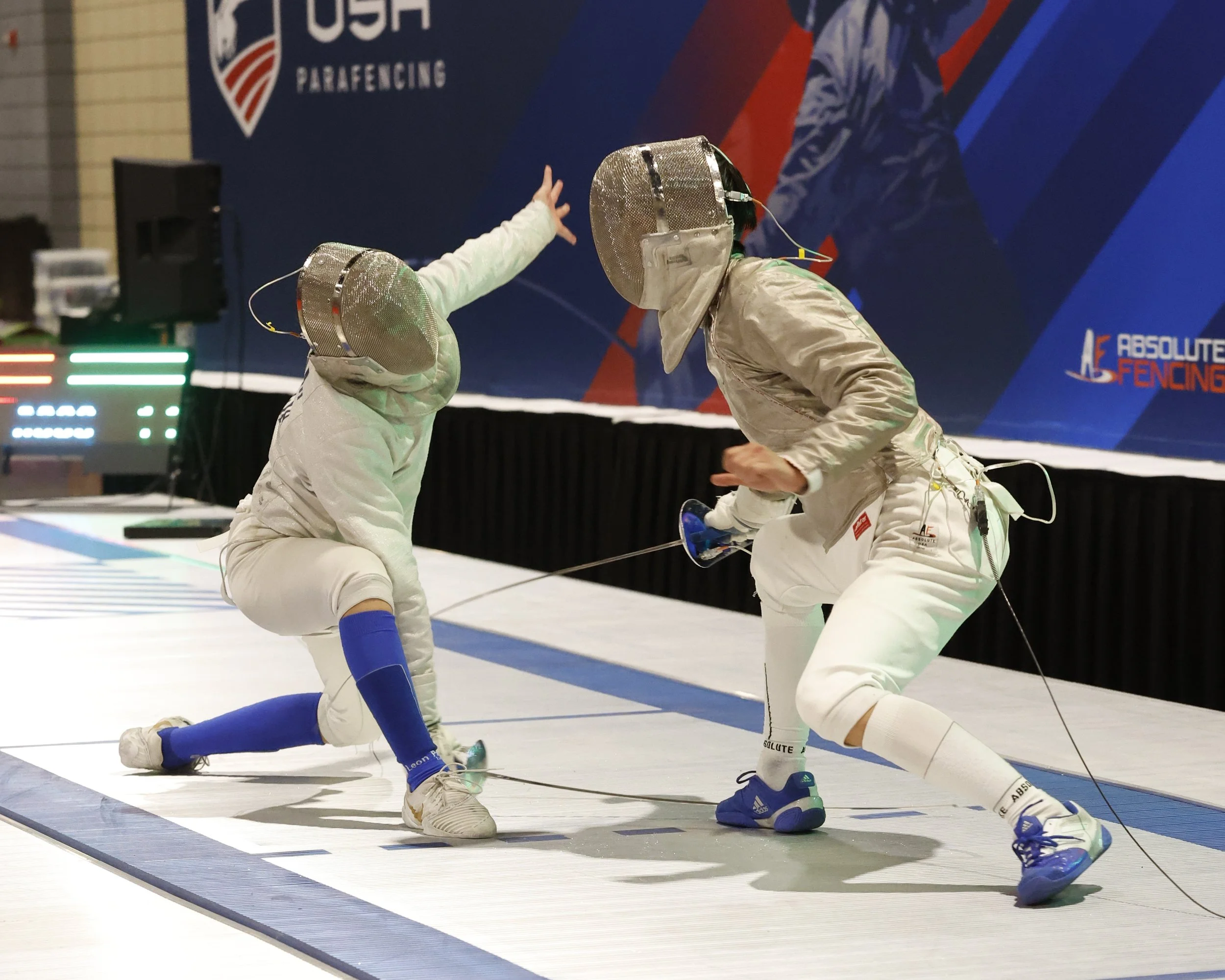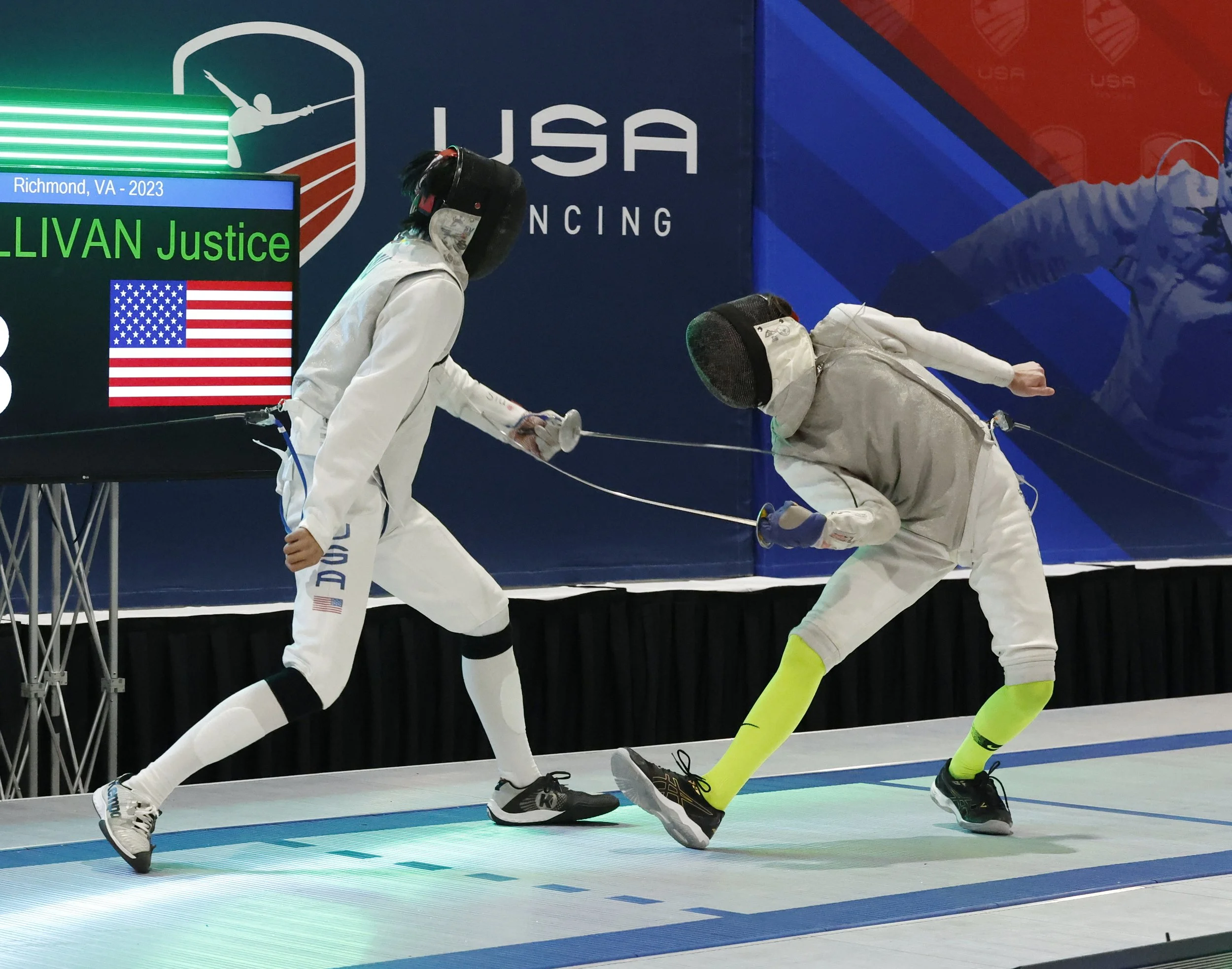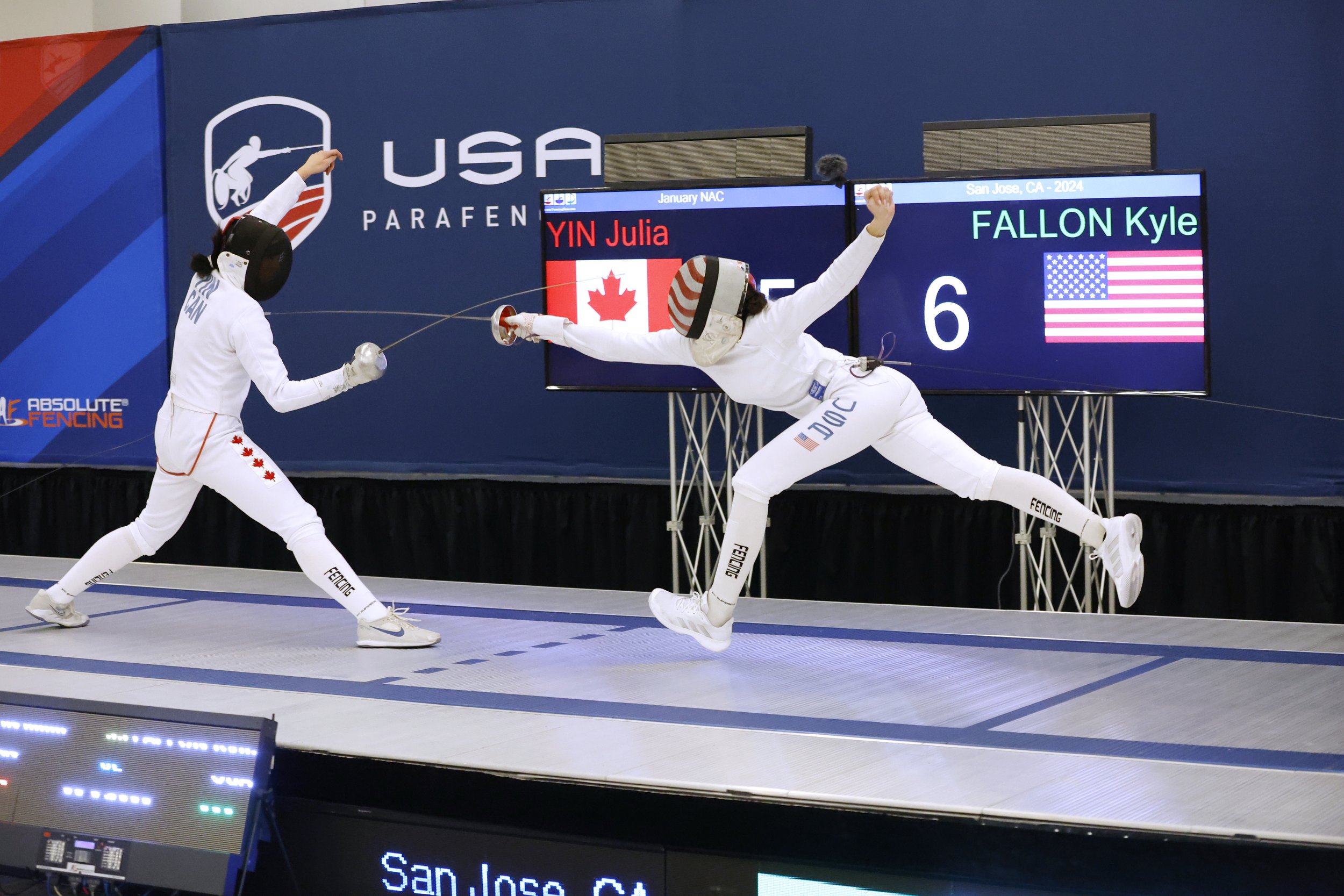Shin Splints and Fencing
It is not uncommon to hear athletes complain about "shin splints." These are typically endemic in runners, but after working with the medical staff at many NACs, fencers are not exempt. But what are shin splints? Can they be avoided? How can they be treated?
When we hear an athlete tell me they have "shin splints," it typically results in an eye roll. We have no use for that diagnosis. It tells us very little other than your shins hurt, and the term often causes patient confusion. Generally, when athletes think of "shin splints," they blame them on "tight muscles" (tibialis posterior, or gastrocnemius) and try to remedy the pain with a few stretches, taking ibuprofen before practice or a bout (this is a terrible idea as non-steroidal anti-inflammatory medications hinder musculoskeletal healing) or "icing" after their training session.
Unfortunately, the culprit for shin splints is often a bone injury of the tibia (aka “shin bone”). Shin splints can best be defined as a spectrum of bone injury. This typically begins with a mild stress response that may worsen until a stress fracture occurs.
When do we see these types of injuries? Usually, it is seen a few weeks into a new training program, the addition of running or an increase in volume or intensity of practice. How many “fencing lunges” are you performing each day? How aggressive are the lunges? Are you also running? These are all factors we consider with shin pain. Shin splints are seen in chronic overtraining, caloric restricting diets or low-bone mineral density. The common theme is lack of recovery, or lack of nutrients available for full recovery.
Now, for a moment, consider the physiological process that occurs in healthy bone: osteoblastic (building of new bone) and osteoclastic (breaking down of bone). In a healthy subject, these processes are simultaneously occurring at all times and are held in balance with good diet and rest. In a long bone, like the tibia (shin), there are two different types of bone: the outer cortex and inner trabecular bone. Think of the cortex as the outer concrete of a skyscraper, while trabecular bone is the scaffolding giving structural integrity to the outer concrete. When osteoclastic occurs at a greater rate than osteoblastic activity (due to insufficient rest, caloric intake, etc.), breakdown of the trabecular bone results. The outer cortex remains intact. This can be uncomfortable and painful: this is a bone stress response. As physical activity remains or increases, and enough trabecular bone breaks down, the outer cortex may break. This is a stress fracture.
Bone stress response injuries are often missed until a fracture occurs, as they are not visualized on standard X-rays. An MRI of the shin is needed to see the breakdown of the inner part of the bone (bone marrow edema). Bone stress injuries can persist for months if not managed appropriately.
If you suspect you may be dealing with a bone stress injury, you should be evaluated by an astute clinician. You can suspect this injury type with reproduction of pain with direct palpation to the shin bone, pain that worsens the more you walk, run, or jump/lunge. The 128kHz tuning fork is a poor diagnostic tool for this but can be utilized. We, as providers, don’t “hang our hats” on this test.
The best way to avoid these types of injuries is to progressively expose yourself to exercise: one rule of thumb is to avoid increasing your training or running volume more than 10-20% per week (there are some exceptions here, but it's outside the scope of this essay). For example, assuming an arduous practice, when starting a training cycle, do not go from one two-hour practice per week to six two-hour practices per week. We need to allow your body to adapt to the demands placed on it.
Allow recovery. A well-balanced diet, with adequate protein intake is important too. Supplementing with calcium, vitamin D and magnesium can also be used to mitigate these injuries. The cheapest and most effective tool is a good night's sleep, which is good for recovery and regulating hormones. But, after a laborious training cycle and tournament (such as a NAC), allow your body to recover. Your body does not need to go right back into fencing six days per week. The fitness and skill built will remain during a one-to-two-week recovery. And, by recovery, we do not mean complete rest but, rather, a decrease in practice time, frequency and intensity.
The good news is bone stress injuries can easily be managed. The quickest and most effective treatment is to cease activity or go non-weight bearing for a minimum of two to three weeks, via bilateral axillary crutches. Some athletes don't have that option, but the causative activity must cease: stop lunging and/or running. During the healing process, we must maintain a positive nitrogen balance. This is easily accomplished by consuming a protein snack between meals and one just before bed, while having a sizeable protein portion at every meal. This simple regimen keeps protein in the blood at all times, the building block for all tissue in the body.
The trick here is you will typically feel better before the bone is healed. This is why it is important to have this injury overseen by a healthcare provider.
Athletes with recurring bone stress injuries may have low-bone mineral density, which can be genetic or developmental (such as a long-time swimmer with minimal land-based training). Once healed, we can develop bone mineral density (in young athletes and prevent loss in older athletes) just like we train for speed or strength. Another consideration is hormonal imbalances with overtraining. The International Olympic Committee (IOC) published a consensus statement on Relative Energy Deficiency in Sport (RED-S). Here are a few links to explore this phenomenon in depth:
1. https://bjsm.bmj.com/content/bjsports/48/7/491.full.pdf
2. https://www.ncbi.nlm.nih.gov/pmc/articles/PMC9724109/pdf/nihms-1853616.pdf
Remember, "shin splints" is a non-specific term that often falls into the spectrum of a bone stress injury and, in the worst case, a stress fracture. Avoid overtraining, running too much, too soon without a diet rich in protein. Ensure you are sleeping to recover and strength train. Of course, if you are having persistent pain even after rest or exercise modification, please seek assistance from a healthcare provider. Any questions can be directed to michaelfanning@scuhs.edu.




